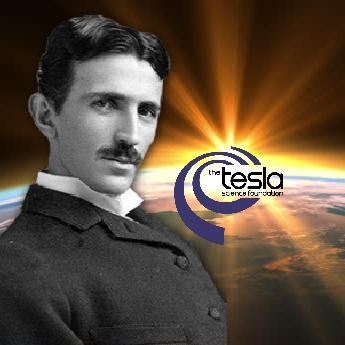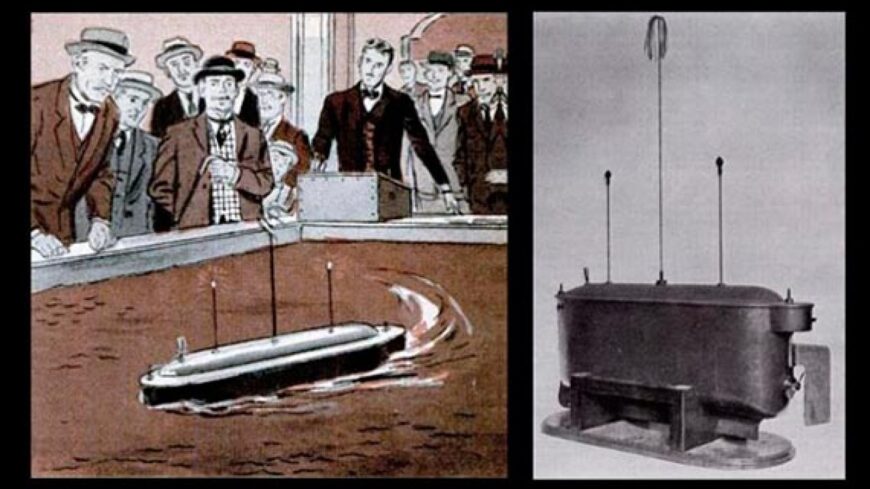PBS.org says that “Tesla’s invention is literally the birth of robotics, though he is seldom recognized for this accomplishment.”
In 1898 at Madison Square Garden in New York City, Tesla unveiled the birth of robots. A small remote-controlled boat may seem trivial to us today. We may have played with one at Six Flags, or we may have played with small toy RC cars as a child. For many people, something like this would be considered a toy, but to call it a robot could seem like a stretch. It isn’t immediately obvious how profound this technology was for the time and how it truly did lay the groundwork for robotics.
Tesla’s invention was very simple as far as what you could do with it. With a remote, you could control the movement of the boat. At Chicago the following year in 1899 he improved the design into a submarine that Tesla claimed could perform certain automations, although very simple, and a few other slight improvements. Those present at the original public unveilings of this device witnessed the birth of something new.
While not as exciting as the robots that have been coming out of Boston Dynamics, Tesla’s boat was in fact a rudimentary robot. Although the term “robot” would not even exist until decades later, but Tesla’s invention is clearly the earliest historical example of something robot-like.
“These automata, controlled within the range of vision of the operator, were, however, the first and rather crude steps in the evolution of the Art of Telautomatics as I had conceived it. The next logical improvement was its application to automatic mechanisms beyond the limits of vision and at great distance from the center of control…”
–Nikola Tesla
Science fiction usually gives us robots that look somewhat human, although the robotic arm-like machines that have spent the last 50 years building automobiles in factories are really a better example of how robots have been used in the service of humankind over the decades.
Merriam Webster defines robot as, “A mechanism by automatic controls.” Some may argue that earlier inventors such as Leonardo Da Vinci were able to design crank-powered machines that could perform very simple task that meet this definition, but any honest person living in modern times would need to conclude that a robot must be electrical in order to be practical. Again, Tesla’s invention is clearly the earliest example in history that meets this requirement.
Because the term “robot” did not yet exist. Tesla called his device a “tele-automaton.” Tele is a prefix meaning “at a distance” and automaton is an old word that means “a complex machine that performs a specific task.” The boat was by no means akin to C3PO, but the introduction of this technology paved the way for modern robotics. If we ever reach a point where the wealthy among us have their own human-like robotic servants to clean house and keep us company, we will have Tesla to thank for setting the chain of events in motion that led to greater things.
Although we haven’t quite reached that point, it’s important to realize that the technology does currently exist even if there are no personal service robots yet on the market. This is highlighted even more so by the fact that some of the most influential people in technology are very worried that Artificial Intelligence could quickly become so powerful that it might become an existential threat to humanity.
Believe it or not, Tesla saw that robotics would advance towards our modern ideas of the word. Referring to his submarine and how it could evolve even further, Tesla said in his autobiography, “I have been since years planning self-controlled automata and believe that mechanisms can be produced which will act as if possessed of reason, to a limited degree, and will create a revolution in many commercial and industrial departments.” Months later, he gave a similar quote with more confidence in the technology. “Telautomata will be ultimately produced, capable of acting as if possessed of their own intelligence, and their advent will create a revolution.”
At the event in 1898, usage of this same device was also the first public demonstration of both radio waves and remote control technology. It was a revolutionary device in more ways than one.
By Ellis Oswalt
Ellis Oswalt is the author of TESLA’S WORDS: A STUNNING UTOPIA OF THE FUTURE and works with the Tesla Science Foundation as a writer and dramatist.
For further reading about Nikola Tesla’s wonderous inventions, read Tesla’s Words (available now in paperback and coming very soon to Audible).


